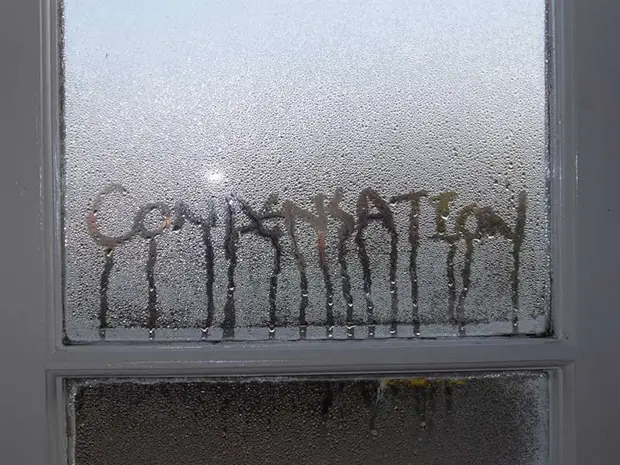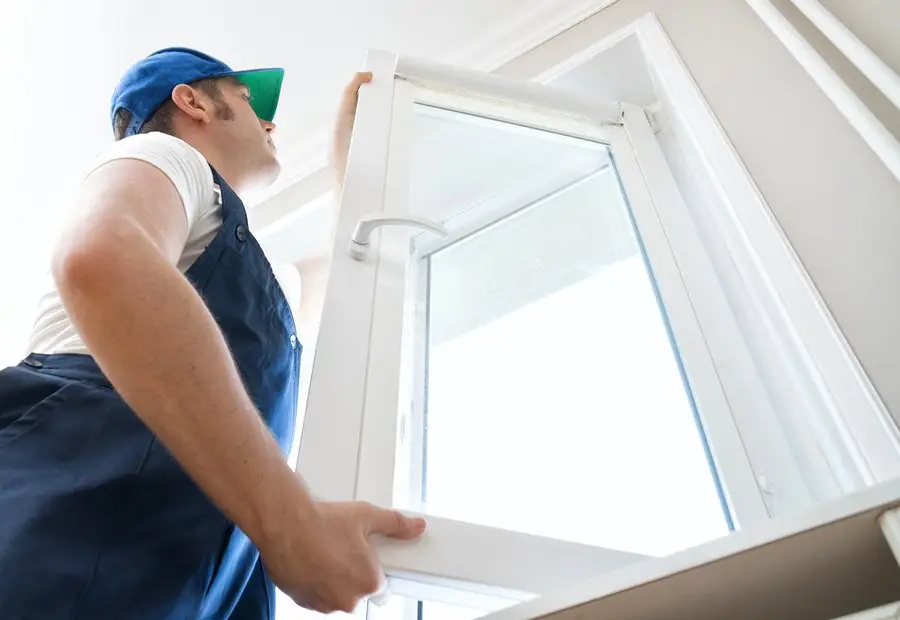Q: I noticed that fog sometimes forms on my windows. Is this something to worry about, and how do I fix foggy windows?
A: Foggy windows are a common occurrence here in New England. You might find moisture on the glass panes on the inside of the window as well as the outside, depending on the time of year. You might even notice that even new replacement windows have foggy glass. But what gives?
What is Condensation and Why Does it Happen?

The first step to understanding foggy windows is to learn about condensation. According to the US Geological Survey, condensation is the process of when water vapor in the air is changed to liquid. It occurs on the glass of windows when the surface is cooler than the surrounding air. You can also experience condensation on your eyeglasses or a cold glass of lemonade in the summer.
Since condensation is a natural part of the water cycle, it’s entirely normal to find fog on your windows from time to time.
When Does Condensation Occur?
The formation of condensation depends on environmental factors and sometimes the time of year. For example, condensation commonly occurs on the outside of the window during the summer. This is due to high outdoor humidity levels with moisture in the air collecting on the glass. It’s essentially the same concept as finding dew on the grass in the morning.
However, in the wintertime, condensation may form inside of the interior glass because the air outside is cold and the interior air is warm. This indicates that the humidity levels in the home are quite high.
It’s important to never ignore window condensation—especially if it doesn’t go away. Knowing why condensation is occurring on the windows is important for energy savings. Condensation can be a major sign that the window is no longer thermally efficient, which directly results in lost energy dollars.
When are Foggy Windows a Problem?

Although condensation is a natural yet common culprit for foggy windows, there are other reasons why you’re experiencing condensation—and it can sometimes signal a major problem: seal failure.
These are a few red flags for problematic condensation (which typically indicates seal failure):
When you see fog on inner glass panes (that doesn’t wipe off), the seal has lost its argon/krypton gas. It’s filled with standard air, which lacks energy-efficient properties. This means the window’s insulation is gone and no longer maintains indoor temperature.
Think of it this way: with argon/krypton gas, energy moves through the gas like honey. If your thermostat is set to 70 degrees and it’s 30 degrees outside, air starts to blend since the gas is gone. Because energy travels through standard air faster than gas, you lose money on energy bills.
When you see fog inside the glass panes, the energy barrier is failing (see above example). It works like a cold/warm front in a weather system, allowing heat to leave or enter your home.
With seal failures, you must carefully check for moisture on wood and vinyl windows. If ignored, this problem can cause moisture and mold damage. According to the United States Environmental Protection Agency, interior condensation may also result in mold growth. This is most commonly seen in bathrooms. It’s important to note that lesser-grade vinyl that is not UPEC (high quality virgin vinyl windows) is porous and can be prone to mold and mildew if not properly maintained. Low grade vinyl window frames are like the cheap plastic containers with spaghetti sauce.
How Do I Know if Condensation is on the Inside or Outside?
If you suspect that you have condensation inside the window panes, try cleaning the glass first. Sometimes what is thought to be fog is buildup or dirt, especially if this window is old or located in the kitchen.
If the fog doesn’t go away after wiping it, it is most likely between the glass panes and an indication of seal failure. When this is the case, there is often no choice other than replacing the window. Replacing the entire window can bring extra benefits aside from addressing seal failure, such as lower utility bills and reduced drafts.
Help! My New Replacement Windows are Foggy
With professional window installation, an airtight seal is created around the frame to block out drafts and moisture. If you discover condensation on new windows, this is often a sign that the windows are doing their job and conserving energy in the home.
Look for virgin vinyl windows with warm-edge spacers. This is important for separating the panes of glass that impact edge temperature, which is typically colder in the center of the window. Condensation resistance measurements run between 1-100—the highest numbers are most effective.
Replace Foggy and Outdated Windows with Coastal Windows & Exteriors

Coastal Windows & Exteriors services Massachusetts, southern New Hampshire, and Maine with quality lifetime replacement windows. If condensation is a problem with your windows, contact us for some of the most energy efficient windows in New England. Contact John with questions at svanderbilt@mycoastalwindows.com or call 978-304-0495 for a quote.

